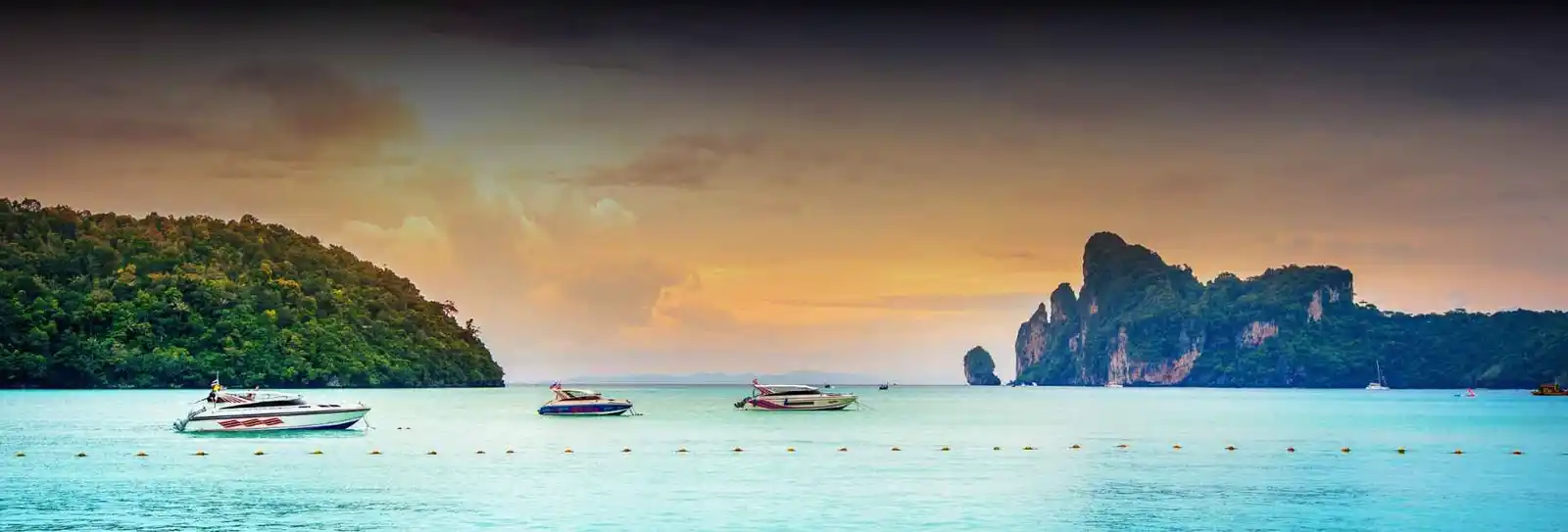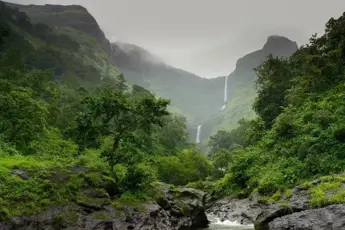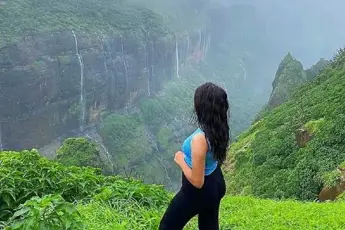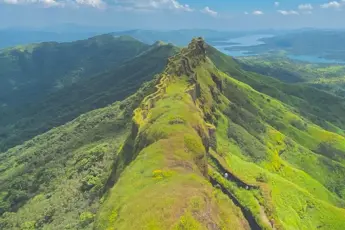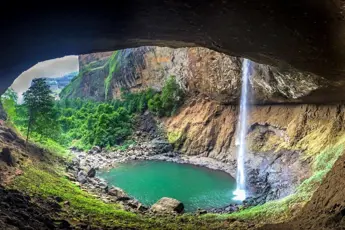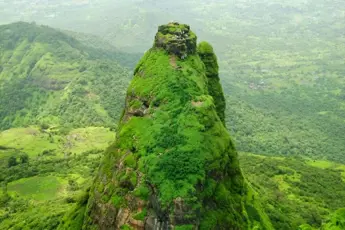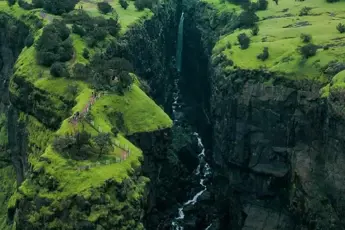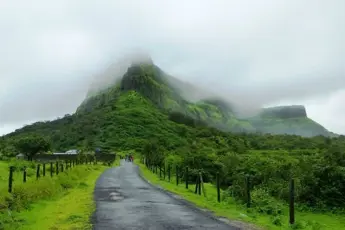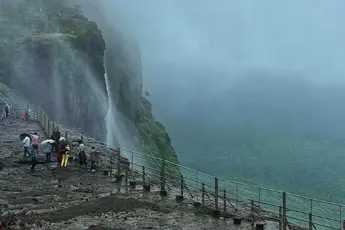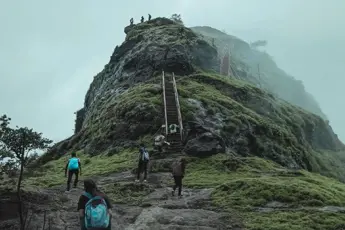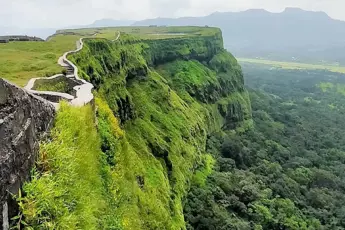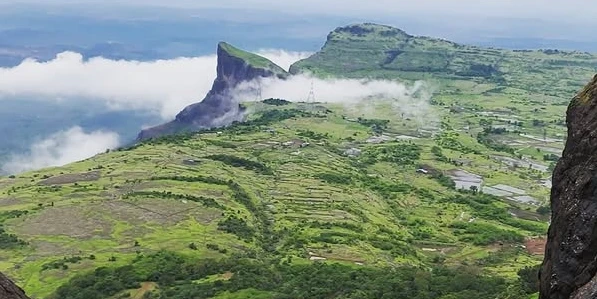
The mountain passage of Naneghat has become one more jewel adorning the garland of the Western Ghats of Maharashtra. It is like a dream for naturalists, historians, and adventure lovers alike. This age-old route for trade, carved from steep and rugged cliffs connecting the Konkan coast with the Deccan Plateau gives those who are fortunate to walk along its paths breathtaking views of the valleys and hills around. Excitement crumbles the experience up along Naneghat, somewhat surreal, through historical remains, lush greenery, and pristine beauty. Atop all that, this geographical location shaped trade and cultural exchanges for years, making it relevant from historical and geological points of view.Historical and Geographical SignificanceThe name means the "pass for coins" in Marathi, the historical function of a toll-collecting centre for traders who traversed the thriving markets of the Konkan into the hinterland Deccan territories. It was indeed an important trade route from the Satavahanas to the circulation between 200 BCE and 190 CE. The carvings and inscriptions in the Brahmi scripts found from the caves along the pass speak of not only the historical significance of the past but also its association with the Satavahana dynasty, especially Queen Naganika. Therewith, the Naneghat pass was considerably busy with a trade of spice, textiles and precious metals because of the western coastline to central India. The large rock-cut structures available are indications of either a levy of tolls or taxation being imposed upon traders passing through the toll collectors stationed at the pass. The rest of the inscriptions refer to the religious and societal customs of the age, thus consolidating history for this region.From a geographical standpoint, The falls under much of the Sahyadri range of the Western Ghats, characterised by rare beauty and a high diversity of life. The pass stands at an approximate elevation of about 2461 feet (750 meters) above sea level. It also makes for really good views of the nearby mountain peaks of Jivdhan Fort. The topography consists of rugged terrains, waterfalls, and deep valleys, making this site very popular for trekking, particularly in the monsoons when life revives in the hills with green curtains and trails enveloped in mist.👉 Looking for a thrilling Monsoon Trek near Pune? Don’t miss the chance to experience the Naneghat Trek with Escape2Explore. This guided adventure offers scenic trails, an ancient fort, and breathtaking sunrise views — perfect for weekend getaways and nature lovers.Nearby AttractionsJivdhan Fort – A Test of Courage and EnduranceThe fort is very close to the hill. Jivdhan Fort today stands as a tall, strong, grim figure that once served as the stronghold of the Marathas. A steep and highly difficult climb - it is a great place to visit for advanced trekkers and rock climbers. Originally commissioned during the reign of the Yadavas, this particular fort was taken over and fortified by Chhatrapati Shivaji Maharaj.Shivneri Fort - Birthplace of Chhatrapati Shivaji MaharajA stone's throw away from the hill is Shivneri Fort, an important fort in Indian history. Bastions and Fort Walls – Offering 360-degree views of Junnar and its surrounding landscape. The trek to Shivneri Fort is rather easy and is an excellent option for the novice as well as the history buffs. The strategic design of the fort, along with its historical significance and scenic vista,s surely make it a place that needs to be visited.Naneghat Reverse Waterfall: The Monsoon WonderPerhaps the most unique experience at Naneghat is the Reverse Waterfall, which is witnessed only during the monsoon season. Unlike regular waterfalls, where water cascades down, this one, however, creates the illusion of flowing upwards, defying gravity and making it a marvellous sight to behold. The intense winds rushing through the valley thrash the falling water upwards and present it like an anti-gravity waterfall. It becomes especially mesmerising from June to September when there is a heavy downpour with the monsoon at its peak. During this period, trekker photographers throng Naneghat to both experience and capture some of the most ethereal moments of this phenomenon. Our trek is also enhanced further in these places, where dense green, misty cliffs combine to create a beautiful experience.The Great Rock Pot ('Nane', or Toll Collection Pot). Another wonderful feature of Naneghat is its gigantic rock pot, the 'Nane'. This rock-cut vessel, scooped up from the stone, was believed to have once served the purpose of collecting toll fees from the traders who passed by through this route in ancient times. The name itself signifies this toll collection. It says that a trader had to deposit coins (name) as a toll to use the pass, and this practice was managed by the Satavahanas. The pot remains intact, a silent witness to the bustling trade activities that once took place here. The place boasts a good, spectacular panoramic view of the valleys and hills around it and is perfectly suited for photography as well as a relaxing outing. Both sunrise and sunset at Naneghat are spectacular, giving trekkers a golden opportunity to embrace the beauty of nature.Trekking Route DetailsThis trek is exciting and moderately challenging, but fun. It has much to offer in terms of natural beauty, history, and, of course, spectacular views, so here is a detailed breakdown of the trek: from the Satavahana dynasty. This has been a trading path where ancient traders used to collect tolls: hence, the name Nane, "coin," and Ghat, "pass." The most striking piece of evidence whose significance looms large in the annals of history is a gigantic rock-cut pot believed to have been used for toll collection 1. These inscriptions date back to the rule of the Satavahanas. The inscriptions speak of commerce, toll collecting, and general administration in the region.The Massive Stone Pot - Arguably one of the most famed Naneghat tourist destinations, this fabulous rock-carved edifice has been traditionally regarded as the toll collector for traders in earlier times. One could incidentally understand the local trade significance of the pass during these early centuries. Valley View - At the top of the trek, a sight to behold and breathe in the vistas of the valleys and mountains around. The view naturally becomes magical with the red glow of sunrise and sunset.Naneghat Plateau - The vast expanse of the newly opened plateau makes it a super beautiful location for divinity and photography. The cool winds blowing and the peaceful atmosphere work wonders for one to rest before starting the descent.Jivdhan Fort (Optional Extension) - An interesting trip for the pure adventurers, Jivdhan Fort nearby can be added, providing a little more history and scenic beauty.Monsoon vs. Winter Trekking ExperiencesThe Monsoon Trekking ExperienceTrekking in the rain is a magical experience when it makes everything green and turns waterfalls to their full glory; rivers become so exuberantly flowing, and all around it's so full of fresh, rejuvenated air. The only drawback is the heavy rains, leeches, landslides, and slippery tracks. The atmosphere remains highly humid, and most of the time, the weather is unpredictable during this time. To some extent, it answers the affliction by choosing trekking routes that cradle the monsoons, putting on fall-proof gear, and taking insect repellents.Pros of Monsoon Trekking: The lush and beautiful landscapes after the rains, Refreshing waterfalls and mist-covered trails, even less crowded trailsCons of Monsoon Trekking: Slippery trails and risk of landslides, More Leeches and insects, More rainy days spoil trekking plansWinter Trekking ExperienceWinter trekking gives a different experience altogether. At almost every point, one can enjoy white landscapes, frozen lakes, and crisp air high in the mountains. But at the same time, there can be high temperatures outside while the daylight lasts this time. The use of special gear or instruments such as crampons, insulated jackets, and thermal layers sometimes becomes mandatory. It demands endurance, with a little increased level of physical fitness and mental strength, and offers the reward of surreal beauty and solitude.Pros of Winter Trekking: Snow-laden trails and frozen rivers would likely have fewer trekkers, so a more placid trekking experience, A chance to witness wonderful winter sceneryCons of Winter Trekking: Very low temperatures- very cold, requiring special gear, Very hard, so not good for beginners, Limited time for trekking as there are shorter daylight hours.How to Reach NaneghatThe Naneghat, a historic mountain pass in the Western Ghats of Maharashtra, India, intrigues people with its breathtaking sceneries, ancient trade routes, and rock-cut caves. It is one of the popular trekking destinations today and has access from many cities through multiple transports for tourists.Nearest CitiesThis is situated in a way that you can reach it with easy access from some of the main cities in Maharashtra for trekkers and visitors interested in hiking:Mumbai (120 km): The most important city near Naneghat since it is the financial capital of India. For Mumbaikars, this trek is the perfect weekend getaway-keep it is safe for adventure-seekers.Pune (120 km): Yet another prominent city within close distance from Naneghat, this serves as an ideal cut-out to nature for trekkers and other adventure enthusiasts.Kalyan (90 km): This is a key transport hub for more people from Mumbai and the suburbs towards Naneghat.Junnar (40 km): The nearest town to Naneghat, Junnar, is also a good base for a traveller en route to the mountain pass.Transport Options The different possibilities to reach Naneghat from Mumbai, Pune, and other cities of the neighbourhood are the following:By Road: Naneghat is well connected via roads, and you can drive down to the base village through NH61 (Kalyan-Ahmednagar Highway). The following are the main routes:From Mumbai: The same Eastern Express Highway, further proceeding into NH61 via Kalyan-Murbad leads to the base village called Vaishakhare.From Pune: This will go through the Pune-Nashik Highway towards Narayangaon, then Junnar, and eventually turn in at Vaishakhare.From Kalyan: Via NH61 and after passing through Murbad, one would reach Vaishakhare.By Train: There are no direct trains to Naneghat, but the nearest railway stations are:Kalyan Railway Station (90 km): Once down here, you can take a taxi or bus to Murbad, further taking another point of transport to reach the base village.Pune Railway Station (120 km): A bus or cab towards Junnar or Malshej Ghat followed by an onward journey will take you to the base village.By Bus: State Transport (MSRTC) and other private buses run from Mumbai, Pune, and Kalyan to Murbad, Junnar, and Vaishakhare. From these thickets, avail local transport (taxi or shared jeeps) to the starting point of your journey.By Private Vehicle: Most use private cars/bikes to travel because the scenic routes leading to the base village are good and nice. Parking is available near the base village of Vaishakhare.The Best Time to VisitMonsoon (June - September) – The most suitable time to enjoy the Reverse Waterfall and get lost in the lush green landscapes.Winter (November - February) – Best to get clarity of views and have pleasant trekking temperatures.Avoid Summer (March-May) – Because this region is hot and dry.Why Book with escape2exploreWhen exploring the Naneghat trek from Pune and beyond, escape2explore stands out as a trusted name in adventure and experiential travel. Here’s why hundreds of travellers choose us for their getaways:Trusted, Well-Reviewed Local Operator: escape2explore has gained the trust of thousands of content tourists all over India. With persistent positive feedback and an unblemished reputation for delivering quality experiences, we assure your experience to be hassle-free, memorable, and value-packed. Our insider local knowledge guarantees that you to always be in safe hands.Seasoned Guides: Our trips are led by friendly, trained, and professional guides who are passionate about the outdoors and your safety. Whether it's a beach trek, a cultural tour, or a spiritual walk through temples, our team knows the terrain, the stories, and how to make each moment count.Safe & Curated Itineraries: Your safety is our number one priority. Each of our tour packages is thoughtfully crafted with safety measures, researched accommodations, and easy travel arrangements. We take care of the details so you can have the experience hassle-free and worry-free.Unique Experience That You Won't Find Anywhere Else: With escape2explore, you discover more than the tourist attractions. We go off the beaten track with hidden beaches, unusual treks, offbeat cultural destinations, and true interactions.Read: Mysore |Shivanasamudra|Adiyogi|Kalu Waterfall|Ambaju Durga


